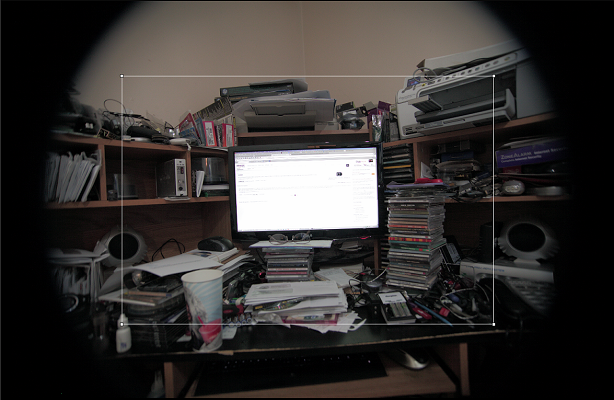To increase the 28.8mm image circle cast by the APS-C lens to the 43.2mm image circle needed by the FF sensor, you would need to increase the focal length by a factor of 0.5, or one-half again. A 24mm lens would require a 12mm extension tube. A 50mm lens would require a 25mm extension tube. A 100mm lens would require a 50mm extension tube, and so on. That is because your modified focal length must be 3/2 of the original to offset the image circle that is only 2/3 of what you need (3/2 x 2/3 = 1). At those kind of tube lengths, you will probably not be able to focus very far beyond Macro distances.
In terms of surface area, an APS-C sensor is only roughly 44% the size of a full frame sensor. The linear measurements are two-thirds the linear measurements of a FF sensor.
A 36mm x 24mm FF sensor has an area of 864mm².
A 24mm x 16mm APS-C sensor has an area of 384mm²
384 ÷ 864 = 0.4444
In terms of the light circle cast by lenses, they must be at least 43.2mm in diameter for a FF sensor and 28.8mm in diameter for an APS-C sensor.
So when you say you only lose 1/3 of the pixels, that is not exactly true. Even if you no longer require your image to be rectangular, but rather accept an image that is the shape of the intersection of a 28.8mm circle imposed over a 36mm x 24mm rectangle. If you want to stay rectangular, you lose roughly one-half the pixels.
I can mount a Tamron AF 17-50mm f/2.8 XR Di-II LD SP Aspherical (IF) Zoom Lens to my Canon 5D mk II. The image circle does not cover the entire sensor. It does have a large enough image circle to reach from bottom to top in the center of the frame. You could crop the image down to the pixels contained in a slightly larger than APS-C sized area of the center of the sensor. On the 5616X3744 (21MP) EOS 5DII at f/3.2 this yields slight corner darkening (blur from the OOF edge of the circle) at about 3900X2600 (10MP) if you want to maintain the 3:2 ratio. You can also crop to 2792X3744 (10.4MP) in either 3:4 or 4:3 orientation. Or 3200X3200 (10.2MP).
17mm APS-C lens mounted on a FF Canon 5D Mark II. The white rectangle is the area of an APS-C sensor. As you can see, the image circle is smaller than the FF sensor.



